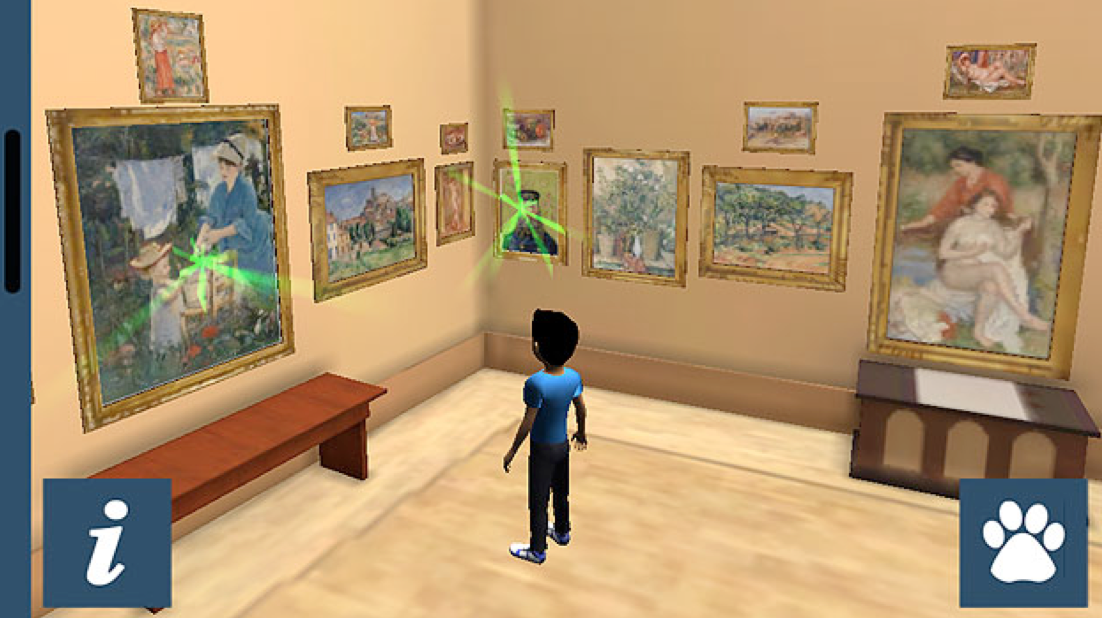
New apps engaging arts audiences in Philadelphia
Two Philadelphia cultural institutions are using mobile technology to engage visitors and provide a deeper understanding of the arts.
The Barnes Foundation and Philadelphia Orchestra recently released apps that enrich the audience experience.
“The Philadelphia Orchestra is one of only a few in the world to create an in-concert mobile app that augments the concert experience. The orchestra seeks to create compelling concert experiences for both new and experienced concertgoers,” said Allison Vulgamore, president and CEO.
In October, the orchestra, a 2011 Knight Arts Challenge winner, debuted LiveNote, its interactive concert guide, at the annual Free College Concert and deployed it again later in the week at its “Stunning Slavic Mass,” both at the Kimmel Center.

Sirmina Dremsizova, a sophomore economics major at the University of Pennsylvania, used LiveNote at the Free College Concert. “It was really user-friendly. I enjoyed the historical bits about composers like Rimsky-Korsakov. The ‘West Side Story’ was nice. I was sitting with a friend that never watched the movie or the musical. It really helped to give a context to what was going on, made things clear and why things were happening.”
The free app, which can be downloaded from iTunes or Google Play, works in real time, synching with the live orchestra performance. Attendees follow along, viewing slides with images, highlights, a musical glossary, program notes and more. They can even save information for viewing later.
Curtis Cowgill, 69, a former director of a local symphony, used LiveNote during the “Stunning Slavic Mass” performance. The app brought the story alive without distracting him from listening to the music, he said. “From a standpoint of technology, I think it’s pretty cool that we can do this,” Cowgill said.
The app was designed to minimize the disruption to concertgoers, with minimal lighting and white text on a black background. Users can also adjust the brightness and font size.
“While we are spending thoughtful and productive time exploring how we can use technology to our advantage, we have taken particular care to make sure its use does not negatively impact the enjoyment of concerts for other audience members,” Vulgamore said.

In September, The Barnes Foundation, also a 2011 Knight Arts Challenge winner, debuted “Keys to the Collection,” turning a museum visit into a game. The app is the first-of-its-kind for a Philadelphia institution, creating a 3-D immersive gaming experience for children ages 7-14. Users download the free app from iTunes or the foundation’s website and can play it almost anywhere. However, there are special perks to playing onsite, including an augmented reality feature where players scan collection photos, find more clues to works of art and download them to their portfolio.
Barnes officials expect the action-oriented gaming app to make the museum’s collection more accessible to a broader audience, including those who are unable to visit in person. The app also sparks more conversation.
“We notice increased interaction within families during their visit,” said Lynn Berkowitz, the foundation’s family and community programs manager. Berkowitz created the app with Aroutis Foster and Jen Katz-Buonincontro, assistant professors at Drexel University’s School of Education.
Players create their own character with options such as gender, five different skin tones, 25 hair hairstyles, three different eye colors and more than 25 types of clothing, including shoes, shirts and pants.

The app has four different playing experiences: in ArtSee gamers jump into the foundation’s paintings restoring lines, shapes and colors; in ArtDash players race along art tracks to match paintings; ArtPuzzle involves rearranging parts of paintings to put them in the correct places; in Ensemble Creator, gamers arrange art ensembles on the walls and share them online. For those who choose to create a login, their game progress and characters can be saved for the next visit.
In the app, Dr. Albert C. Barnes goes on an art tour instructing his dog Fidèle to have a new art display when he returns. Fidèle realizes the collection keys are missing and elements of some paintings lost. Fidèle guides users with clues to help him restore the art. Players become art inspectors, finding keys while exploring and learning about the foundation’s Annenberg Court public space and the collection gallery’s six rooms.
The foundation is extending its new technology to possibly reach audiences via classroom learning. Officials made a presentation to the Pennsylvania Art Education Association in October and plan to present at the National Art Education Association 2015 Conference in New Orleans.

“The purpose of the presentation is to provide awareness that this valuable and fun arts app is also a potential tool for learning for the classroom and out-of-school time,” Berkowitz said.
Recent Content
-
Artsarticle ·
-
Artsarticle ·
-
Artsarticle ·
